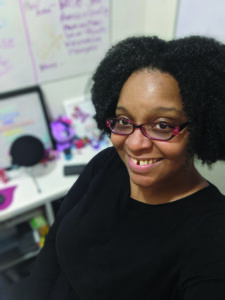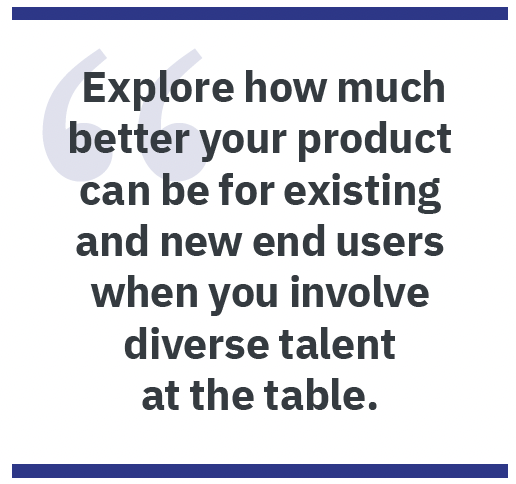By Shawneda Crout
Organizations that center all communications around accessibility, inclusion, and usability create a universal messaging system that intersects technical communication and marketing. As global leadership continues to work toward regulating digital media, building cohesive universal messaging frameworks will become the standard. Start by recognizing the need to create frameworks and cultures that prioritize content design, resource documentation, and enablement for dominant and non-dominant groups.
Accessibility
Online regulations for laws around communications are becoming more focused on function than feeling. There are increasing fiscal drivers to improve product messaging and improve understanding across abilities seen and unseen. Website compliance and alt-text creation are simple ways that signal the importance of thinking beyond the average end user.
Mirroring offline adherence to prioritizing accessibility is key for the future of digital media to be more equitable for users. Design each touchpoint with your business to enable not only the able bodied, but also users with noticeable impaired abilities and those with invisible differences in ability.
Plan to solve pain points with your products for more than the conventional user. Consider how your brand colors appear to someone with visual impairments; how your messaging sounds to someone using a screen reader; and how your diction, tone, and voice makes someone outside of dominant groups feel when looking to solve their problem with your solution.
Design to involve each ability level within reason for the current iteration of your product. Plan to invite a diverse talent pool to be part of your product’s next iteration to expand the possibilities of your product’s efficacy to more than ordinary users. Explore how much better your product can be for existing and new end users when you involve diverse talent at the table.
Usability
When your product is ready to market don’t be overwhelmed with the thought of making a solution for as many people as possible. Be open to feedback on how you can reduce limitations for those with visible differences in ability. Invest time in understanding how language, “fun adaptations,” and prioritizing the “cool factor” can exclude potential users.
Look for ways to build better documentation, knowledge bases, and implementation resources that are beneficial for neurodiverse, visually impaired, and hearing-impaired users. Working to ignore preconceived notions about a traditionally othered group that includes a spectrum of capacities can improve usability for all end users. Invest the time, money, and effort needed to create resources centered on equitable access that delivers sustainable product efficacy.
Choose tools that center accessibility in the deliverable. Adobe products provide built-in accessibility tools for marketing, technical writing, and experience management. Consider what experienced and early career users will need to be able to build inclusive practices into content design workflow.
Inclusion
Inclusion that engages more than the average user requires forward thinking leaders ready to set the example. Senior leaders who understand the dearth of untapped solutions for differently abled users make time to reinforce inclusive design initiatives with other practical efforts to make inclusive design part of the company culture. This can be as simple as learning more about DEIB as part of governance, including diverse populations in user research, and responsible corporate citizenry or hiring from unconsidered and underrepresented populations.
Being open to ongoing feedback to improve making inclusive design that enables usability must be an ongoing effort with measurable KPIs that are folded into organization-wide systems and processes. Building a culture that values accessibility, usability, and inclusion creates an organizational environment that encourages creating frameworks that showcase a culture committed to providing solutions for as many users as possible. This ideology becomes part of every communication and makes it simpler to expect inclusive design thinking to inform workflows, messaging, and strategy from product development to TikTok posts.
Resources
https://www.w3.org/WAI/fundamentals/accessibility-usability-inclusion/
https://www2.deloitte.com/us/en/insights/topics/marketing-and-sales-operations/global-marketing-trends/2022/diversity-and-inclusion-in-marketing.html
 SHAWNEDA CROUT (sc@shawneda.com) works at the intersection of technical communication and marketing for Women Who Code. When she isn’t “wielding her pen” to solve for NGOs, SMBs, or clients you’ll find her working on her next novel.
SHAWNEDA CROUT (sc@shawneda.com) works at the intersection of technical communication and marketing for Women Who Code. When she isn’t “wielding her pen” to solve for NGOs, SMBs, or clients you’ll find her working on her next novel.



